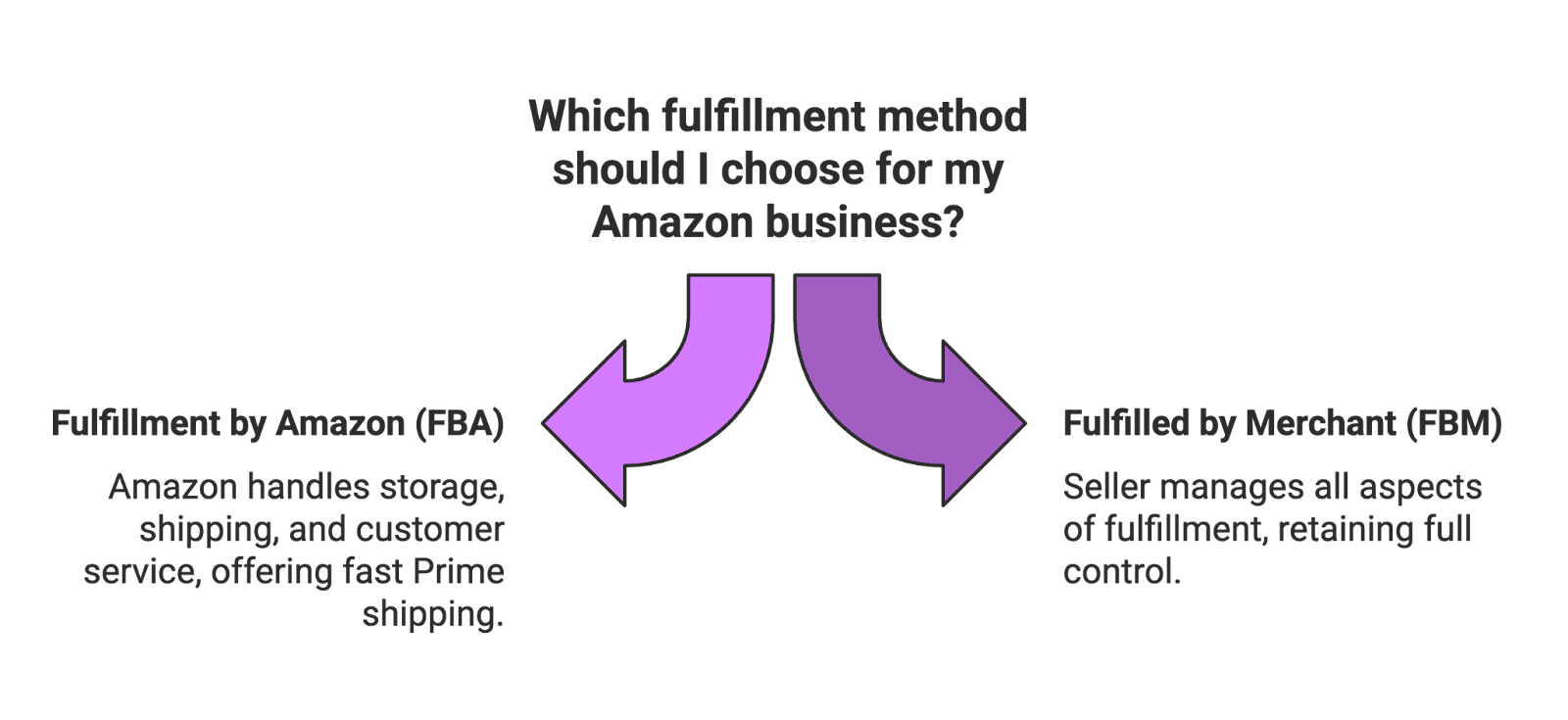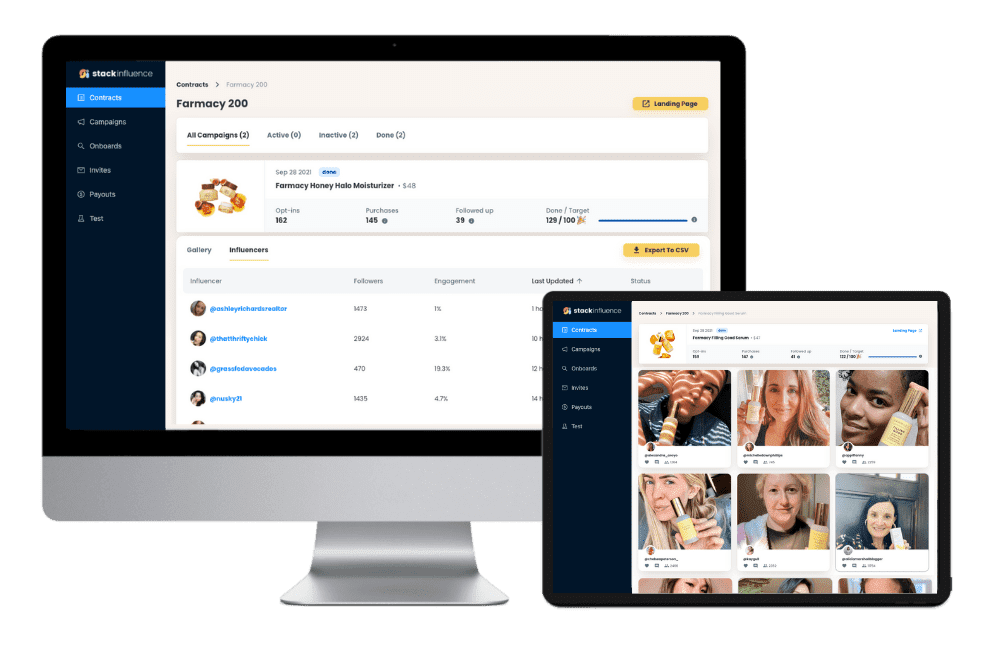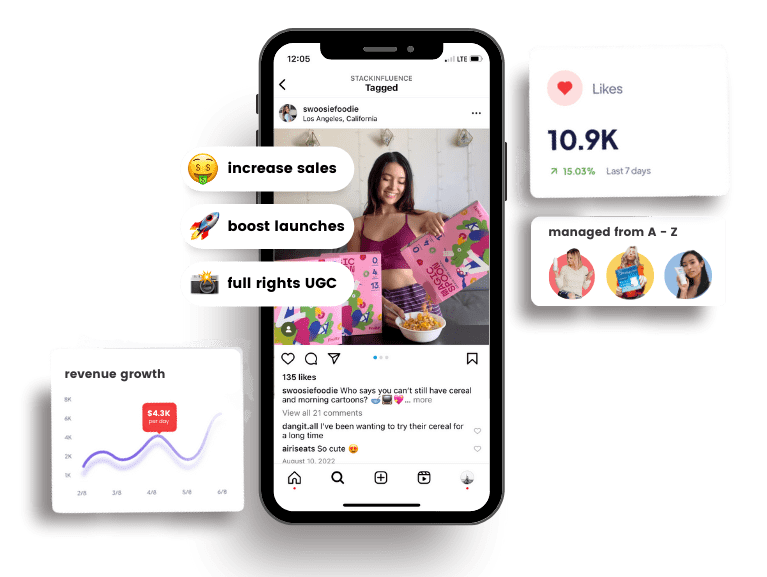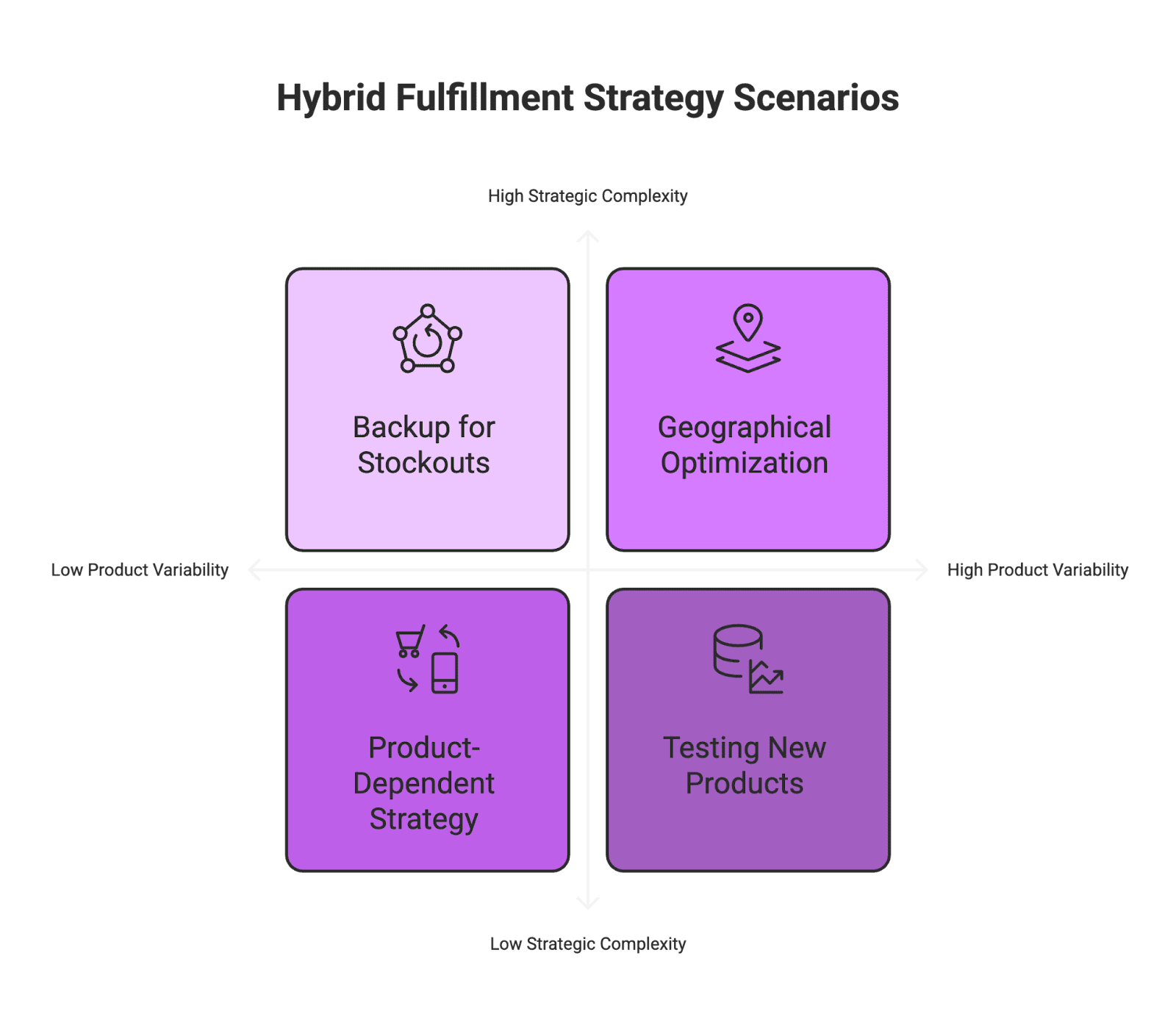What is Amazon FBA vs FBM?
5th
August, 2025
Influencer Marketing
Amazon Marketplace
Artificial Intelligence
TikTok Tips
In the world of e-commerce, Amazon sellers often face a crucial decision: whether to use Fulfillment by Amazon (FBA) or Fulfilled by Merchant (FBM) for their products. Both FBA and FBM have their own advantages and drawbacks, and the best choice depends on your business model, product type, and resources. This comprehensive guide breaks down FBA vs FBM in a neutral, fact-based manner – covering definitions, pros and cons, key factors to consider, and even some real-world data insights – to help Amazon sellers (from solo entrepreneurs to major brands) make an informed decision. We’ll also touch on how this choice can impact other aspects of your business, such as the time you have for marketing (think working with micro influencers and content creators to generate UGC) and overall customer experience.
What Are Fulfillment by Amazon (FBA) and Fulfilled by Merchant (FBM)?

Before diving into comparisons, let’s clarify what each fulfillment method means:
- Fulfillment by Amazon (FBA): FBA is a service where Amazon handles the heavy lifting of fulfillment on your behalf. Sellers send inventory to Amazon’s warehouses, and Amazon takes care of storage, picking, packing, shipping, and even customer service for those orders. In essence, you outsource the entire fulfillment process to Amazon’s logistics network. This can save time and operational effort, allowing you to offer customers the fast Prime shipping experience Amazon is known for.
- Fulfilled by Merchant (FBM): FBM means you, the seller, handle fulfillment using your own resources (or a third-party logistics partner). You list products on Amazon’s marketplace but manage your own inventory storage, packaging, shipping, and customer support for those orders. You retain full control over the fulfillment process – from how products are packed to how quickly they ship – rather than outsourcing it to Amazon.
In simpler terms, FBA is Amazon’s fulfillment on autopilot, while FBM is a DIY approach to fulfillment. Neither is inherently “better” in all cases; many Amazon sellers use one or the other, or even a combination of both. In fact, nearly all Amazon sellers use FBA in some form, but a significant portion also fulfill orders themselves via FBM.
When to Choose FBM (Fulfilled by Merchant)
Fulfilled by Merchant (FBM) can be the better option for certain sellers and situations. You might lean toward FBM in the following cases:
- You want maximum control over the customer experience. If maintaining control over packaging, branding, and shipping is important – for example, including personalized notes, custom packaging, or promotional inserts – FBM gives you that freedom. You can add a personal touch that FBA (with its standardized Amazon boxes) doesn’t allow. Sellers who value their brand’s unique unboxing experience or have a strong focus on customer communication often prefer FBM for this reason.
- You have an established logistics infrastructure. If you already have a warehouse or storage space and a reliable shipping process (or you partner with a third-party fulfillment center), FBM may be cost-effective. Sellers with existing e-commerce operations beyond Amazon, or those who are content creators or small business owners used to shipping products, might utilize their own fulfillment to save on fees.
- Your products are oversized, heavy, or slow-selling. FBA fees (both fulfillment and storage fees) increase significantly for large or heavy items, which can eat into profit margins. If your product is bulky or moves slowly (sits in storage for months), fulfilling it yourself can avoid the hefty long-term storage fees and surcharges Amazon would charge. For example, one analysis found that using FBA for an oversized item (a kayak) would incur over $300 in Amazon fees, whereas shipping it via FBM for around $100 could net about $100 more profit per unit – plus save roughly $27 in monthly storage fees that FBA would charge for that large item. In cases like this, FBM clearly makes more financial sense.
- You can fulfill orders cost-effectively on your own. If you find that your in-house shipping cost per order is lower than FBA fees, FBM might boost your profit. This often applies if you negotiate good shipping rates or your product margins are thin – every dollar saved on fulfillment counts. Amazon does offer discounted shipping labels to FBM sellers (via programs like Buy Shipping) to help; for instance, Amazon’s pre-negotiated rates can be 31% lower on average than standard retail shipping rates. If you can take advantage of such savings and run a lean operation, FBM could yield better margins.
- Your inventory turnover is slow. Products that take a long time to sell (low sales velocity) can rack up storage fees in FBA. With FBM, holding inventory in your own facility may be cheaper if space is not a big cost for you. You won’t be penalized by Amazon for slow turnover – you only incur your normal storage overhead. Slow and steady sellers (for example, specialized or seasonal products) often choose FBM to avoid paying for long-term storage in Amazon warehouses.
- You excel at customer service. FBM means you handle all customer inquiries, returns, and refunds directly. If you have excellent customer service practices in place and want to maintain direct communication with buyers, FBM lets you do that. You can potentially turn a bad situation (like a delayed shipment) into a positive interaction by responding personally. Keep in mind that Amazon holds FBM sellers to high standards for metrics like late shipment rate and buyer feedback – so only choose FBM if you’re confident in meeting customer expectations.
In summary, FBM is ideal for Amazon sellers who have the capability to fulfill efficiently on their own and desire greater control over the fulfillment process and customer interaction. It’s often favored by more experienced sellers or those with unique products that don’t fit Amazon’s FBA cost structure. By handling fulfillment, you keep more of the process (and potentially profit) in-house – but you also take on the responsibility for timely delivery and customer satisfaction.

Unlock the Power of Micro Influencers and Elevate your Brand Today!

When to Choose FBA (Fulfillment by Amazon)
Fulfillment by Amazon (FBA) is extremely popular for good reason – it streamlines operations for sellers. Consider using FBA in the following scenarios:
- Your products are small, lightweight, and sell quickly. FBA’s fee structure is most favorable for items that are compact and have a high turnover rate. Small, fast-selling products incur lower storage fees (since they don’t sit long) and benefit greatly from FBA’s efficient picking and packing. For example, a private-label kitchen gadget that sells a high volume each month might thrive with FBA handling the logistics. Many top Amazon sellers with gadget or apparel brands use FBA so they can scale sales without worrying about warehouse capacity.
- You lack the infrastructure or desire to handle logistics. If you’re an e-commerce entrepreneur who doesn’t have a warehouse or shipping team – or you simply don’t want to spend your time packing boxes – FBA is a turnkey solution. Amazon will store your inventory and ship orders for you, which is especially helpful for at-home sellers or small businesses without existing fulfillment operations. This outsourcing can free you up to focus on other areas like product development, marketing, and content creation for your brand.
- You prefer a hands-off approach to customer service and returns. FBA includes Amazon’s customer service: they handle inquiries, returns, and refunds on orders they fulfill. This means you rarely, if ever, have to directly interact with customers for support issues on FBA orders. For sellers who find customer service time-consuming or would rather delegate those potentially tricky communications (including managing returns logistics), FBA is a relief. Amazon’s professional customer support can improve the buyer experience, and you won’t need to field emails at 2 AM about missing packages.
- You want the Prime badge and fast shipping for your products. Products fulfilled through FBA are automatically eligible for Amazon Prime’s two-day (or even same-day) shipping promises. The little blue Prime badge on your listing can dramatically boost your conversion rates and sales, because Prime members tend to prefer items that ship free and fast. In fact, with over 200 million Prime members worldwide looking for that badge, using FBA gives you a huge advantage in attracting those customers. (It is possible to get a Prime badge via FBM using Seller Fulfilled Prime, but that program requires meeting strict performance criteria and is not open to all sellers by default.)
- Your own fulfillment would be more expensive or less efficient. Amazon’s massive shipping network often operates at a lower cost per unit due to economies of scale. Fulfillment by Amazon can sometimes even save you money compared to self-fulfillment – Amazon reports that shipping with FBA costs about 70% less per unit than comparable two-day shipping options from other carriers. If you don’t have volume shipping discounts or if your local postage rates are high, FBA might actually reduce your fulfillment cost. Additionally, Amazon’s error rate in fulfillment is low – they are experts at warehouse operations – so you’ll likely see fewer mistakes or lost packages, which keeps customers happy.
- You’re looking to scale your business quickly. Using FBA can remove logistical bottlenecks as you grow. You can send a pallet of inventory to Amazon and let them handle distribution across their network of fulfillment centers. This means even a small business can offer 1-2 day delivery across the country, something hard to achieve on your own. With FBA, many sellers find they can focus on growth activities – sourcing new products, improving listings, or building their brand (perhaps by collaborating with micro-influencers and collecting more UGC for marketing) – instead of being buried in day-to-day fulfillment tasks. As Amazon itself suggests, outsourcing fulfillment to FBA can free up time to “focus on other aspects of your business, like scaling up or building a brand”.
- You worry about maintaining seller metrics. Amazon has strict performance metrics for sellers (like on-time shipment rate, order defect rate, etc.). When you use FBA, many of these metrics are either guaranteed by Amazon or easier to meet. Notably, Amazon will automatically handle or even strike out negative feedback related to fulfillment on FBA orders. If an FBA order arrives late or a customer complains about packaging, those issues usually won’t count against your seller account health – Amazon takes responsibility. This safety net means FBA sellers have less to worry about regarding seller feedback and ratings, as Amazon can remove negative feedback for issues under their control. For new sellers especially, FBA offers peace of mind that your fulfillment won’t accidentally get your account dinged.
In short, FBA is often the go-to choice for sellers who prioritize convenience, Prime eligibility, and the ability to scale without investing in logistics infrastructure. By paying Amazon’s fees, you essentially hire a world-class fulfillment service. This can be a game-changer for small businesses and content creators looking to monetize products, as it lowers the operational barriers to selling nationwide (or globally) on Amazon. Of course, the trade-off is giving up some control – and a slice of your revenue – to Amazon in exchange for that convenience.
Key Factors to Consider When Deciding Between FBA and FBM
Choosing between FBA and FBM isn’t one-size-fits-all. You should evaluate several key factors in the context of your business. Below are seven of the most important considerations:
- Product Size and Weight: The dimensions and weight of your product heavily influence fulfillment costs. Smaller, lighter items tend to favor FBA because Amazon’s fees for such items are reasonable, and you gain the Prime shipping benefit. Bulky or heavy products may be better with FBM to avoid oversized FBA fees and surcharges. Always calculate FBA fees for your specific product; Amazon’s FBA fee calculator can help estimate costs.
- Inventory Turnover Rate: How quickly your product sells (inventory turnover or sales velocity) matters. Fast-selling items do well in FBA since they won’t incur long storage fees and Amazon can quickly replenish stock across fulfillment centers. Slow-moving inventory can accumulate storage fees in FBA, so if your product has sporadic sales or is seasonal, FBM might save money by storing it yourself until it sells. Consider your sales volume and consistency – high volume and steady sales lean toward FBA, while low volume or irregular sales can lean FBM.
- Logistics Infrastructure & Capacity: Do you have the ability to store inventory and ship orders reliably? If you have sufficient storage space, packing materials, and a process to handle shipping daily orders, you’re equipped for FBM. If not, replicating Amazon’s logistics prowess is tough – FBA might be the safer bet to ensure orders go out on time. Also consider geographic reach: Amazon’s FBA network can get products to customers nationwide in two days. If fulfilling yourself would result in longer shipping times or higher costs to reach far-away customers, that’s a point in FBA’s favor. Using FBA can also simplify international expansion, as Amazon can handle global logistics if you choose to enter other marketplaces.
- Control over Customer Experience: Think about how important it is for you to control packaging, inserts, and overall presentation. With FBM, you have full control – you can brand your boxes, include thank-you cards or freebies, and provide a bespoke experience. With FBA, Amazon controls the packaging (typically Amazon-branded boxes) and you won’t be able to include extras in the package. Additionally, FBM allows direct communication with customers if needed, whereas FBA creates a buffer (Amazon handles most emails and you might never interact with the buyer). If building a direct connection or collecting customer info for your brand is a priority, FBM gives more opportunities for that personalized touch. On the other hand, if you’re okay with Amazon’s standardized experience and prefer a hands-off approach, FBA’s consistency might suit you better.
- Customer Service and Returns: Ask yourself if you want to handle customer service issues and returns. FBM requires you to manage all customer inquiries and reverse logistics (processing returns, refunds, or replacements) for Amazon orders. If you have a dedicated customer service team or you enjoy engaging with customers to resolve issues, this can work. However, it can become time-consuming. FBA includes Amazon’s customer service for orders – they handle questions about shipping, process returns, and refund customers on your behalf (you just get notified and have to financially cover the refund). Amazon has systems in place for returns (customers can drop off at Kohl’s or UPS stores with no box, etc.), which many sellers find convenient. If dealing with return merchandise authorization and unhappy buyers isn’t something you want on your plate, FBA provides relief.
- Costs, Fees, and Profit Margins: Ultimately, compare the total cost of each fulfillment method for your product. FBA’s costs include fulfillment fees per unit, monthly storage fees (based on volume and time stored), and occasional additional fees (like long-term storage or removal fees if inventory doesn’t sell). FBM’s costs include your storage (warehouse rent or your space’s opportunity cost), packing materials, shipping postage, and labor. Also remember FBA may reduce your shipping costs significantly due to Amazon’s scale – as mentioned, FBA’s shipping can be 70% cheaper than typical carriers for two-day delivery. Use the Amazon Revenue Calculator or similar tools to input your product data and get a side-by-side cost estimate. Consider your profit margin under each scenario. Sometimes FBA fees cut deeply into margins, especially for low-cost items, making FBM more profitable. In other cases, FBA’s boost to sales volume (thanks to Prime eligibility) more than makes up for the fees. Analyze the numbers for your specific situation – it may even make sense to use FBA for some of your products and FBM for others, depending on their margins.
- Prime Eligibility and Shipping Speed: This is a pivotal factor. FBA items are Prime-eligible by default, meaning they attract all those fast-shipping shoppers. FBM items are not Prime-eligible unless you join the Seller Fulfilled Prime (SFP) program, which at times has limited enrollment and requires you to meet Amazon’s Prime-level shipping standards consistently. If being Prime-eligible is crucial (for example, in competitive categories where most items have the badge), FBA is the easiest path to get it. Along with Prime, consider general shipping speed – Amazon will almost always pick, pack, and deliver faster than an individual seller can. If your FBM handling time or delivery estimates are slow (e.g., you ship in 3-5 days and use ground shipping), you might lose out to faster competitors. Modern e-commerce customers expect fast (often 2-day or next-day) delivery. If you cannot feasibly offer that via FBM, then opting for FBA (or SFP if you qualify) will keep you competitive.
By weighing these factors, you can gauge which fulfillment method aligns with your business needs and customer expectations. Often, newer Amazon sellers start with FBA to take advantage of Amazon’s logistics while they learn the ropes, whereas more seasoned sellers may mix and match methods as they optimize for cost and control. Remember that the “best” choice can vary even between products in your catalog – don’t be afraid to use a hybrid strategy if appropriate.
FBA vs FBM: Sales and Profitability Comparison
It’s worth looking at some data on how FBA and FBM sellers perform, on average, in terms of sales and profits. This gives insight into the outcomes other sellers are experiencing with each model:
Figure: A comparison of seller performance metrics between FBA and FBM, based on a 2023 survey of Amazon sellers. The left pair of bars shows the percentage of sellers earning over $25,000 per month in revenue, and the right pair shows the percentage of sellers reporting profit margins above 20%. Notably, 28% of FBM sellers reported earning more than $25k per month, compared to only 12% of FBA sellers. And while healthy profit margins are common in both groups, slightly more FBM sellers (38%) achieved over 20% profit margins than FBA sellers (35%).
According to Jungle Scout’s 2023 State of the Seller report, FBM sellers were more likely to be high-revenue earners and have very high margins, despite FBA being the more widely used method. This might seem surprising at first, but there are a few possible explanations:
- Many beginners and smaller sellers flock to FBA for ease of use, whereas some FBM sellers are established businesses with the capacity to handle large volume (thus the higher representation of $25k+ earners in FBM). In other words, the FBM cohort may include more experienced or higher-scale sellers on average, skewing their revenue upwards.
- FBM sellers save on FBA fees, which can translate into higher profit margins if they run an efficient operation. The data above shows a modest edge in profit margin for FBM sellers (38% vs 35% having 20%+ margins), suggesting that keeping fulfillment in-house can indeed preserve profit for some.
- It’s also possible that some sellers only use FBM for their highest-priced or bulk products (hence higher revenue per seller), while using FBA for smaller items – a strategy that inflates FBM sellers’ average revenue in surveys. Meanwhile, thousands of FBA-first sellers might be doing moderate volumes, bringing down the average or percentage hitting $25k/month.
It’s important not to misconstrue this data as “FBM is more profitable than FBA” universally. Rather, it tells us that both models can lead to success, and that there are thriving sellers in each camp. FBA’s benefits in scaling and conversion can drive huge sales, and FBM’s cost savings can boost margins – it all comes down to how you leverage each model for your particular business. Some of the most successful Amazon businesses actually use a combination: for instance, utilizing FBA for most products but switching to FBM for certain high-cost or niche items, or during stockouts.

Unlock the Power of Micro Influencers and Elevate your Brand Today!

Using a Hybrid Approach: FBA and FBM

You don’t necessarily have to choose only one fulfillment method. In fact, a number of sellers embrace a hybrid strategy, leveraging both FBA and FBM to optimize results. Roughly 1 in 7 Amazon sellers use a mix of FBA and FBM for their business, and Amazon fully allows this flexibility. Here are a few scenarios where using both makes sense:
- Product-dependent strategy: As mentioned earlier, the best method can vary by product. Savvy sellers sometimes send their fast-moving, small products to FBA (to benefit from Prime and hassle-free fulfillment) while keeping larger or slow-moving products as FBM. For example, a brand might FBA their small electronics but FBM their oversized furniture pieces. This way they minimize fees and storage costs on the items that are expensive to fulfill via FBA.
- Backup for stockouts: Some sellers list the same product in two ways – primarily via FBA, but also as FBM – under one Amazon listing. The FBM listing is usually hidden (set at a higher price or back-up status) but becomes active if FBA stock runs out. This tactic means you can keep the listing live and selling via FBM if your FBA inventory is temporarily depleted. It’s a smart hedge to maintain sales continuity, especially during volatile demand spikes.
- Geographical advantages: If you, for example, have your own warehouse on the west coast, you might fulfill west-coast orders via FBM (fast and cheap from your location) but use FBA to stock inventory in East Coast fulfillment centers for faster delivery to that region. Amazon’s Multi-Channel Fulfillment network and programs like Amazon Warehousing & Distribution (AWD) also offer ways to blend your storage with Amazon’s to strategically position goods. A hybrid approach can thus optimize shipping times and costs by region.
- Testing new products: You might start selling a new product via FBM to test the waters (to avoid sending inventory to FBA that might not sell). Once it proves itself and sales pick up, you can transfer it to FBA for scaling. Conversely, if you have a product on FBA that isn’t performing or has become unprofitable due to fees, you can switch it to FBM to cut costs. Sellers often iterate between methods as products go through their life cycles.
Using both FBA and FBM requires more management – you’ll be handling some self-fulfillment while also sending stock to Amazon – but it offers tremendous flexibility. Essentially, you can capitalize on FBA’s strengths where they matter and use FBM to mitigate FBA’s weaknesses. Many advanced Amazon sellers find that this balanced approach maximizes their overall business performance. Just be sure to keep a close eye on inventory levels in both channels and stay organized, so you don’t confuse orders or oversell a product.
Conclusion: Finding the Right Fulfillment Strategy for Your Business
In the FBA vs FBM debate, there is no one-size-fits-all winner – the “better” option depends on your unique business priorities. FBA offers unparalleled convenience, access to Prime customers, and scalability, making it incredibly powerful for many Amazon sellers (especially those who value a hands-off approach and fast growth). FBM, on the other hand, grants you greater control, potentially lower costs for certain products, and a more personal touch in fulfillment, which can be advantageous for specific situations and more experienced sellers.
When deciding between FBA and FBM, weigh the factors we discussed: your product type, sales velocity, resources, desire for control, and cost structure. It may help to calculate the numbers (use Amazon’s revenue calculator or spreadsheets) to see profitability under each model. Also, consider starting with one method and adding the other as you scale – flexibility is key, and Amazon allows you to change your fulfillment strategy as you learn.
Keep in mind, whichever fulfillment route you choose, success on Amazon also depends on driving traffic and creating a great customer experience. This is where your time saved (especially if using FBA) can be reinvested into marketing and brand building. Many thriving Amazon brands focus on building their brand presence through micro-influencers, content creators, and UGC (user-generated content) to complement their fulfillment strategy. For instance, using FBA might free up time to collaborate with micro influencers who can promote your product on social media, creating buzz and authentic content that draws shoppers to your listing. In summary, both FBA and FBM can be paths to success on Amazon – it’s all about aligning the fulfillment method with your business’s needs and goals. Stay neutral and open-minded: you can even use both and adjust as your business evolves. By thoughtfully managing your fulfillment, and simultaneously focusing on product quality and marketing (perhaps via influencer-driven campaigns and excellent customer service), you’ll put your Amazon business on track to grow and thrive, no matter which fulfillment model you deploy.

By William Gasner
CMO at Stack Influence
William Gasner is the CMO of Stack Influence, he's a 6X founder, a 7-Figure eCommerce seller, and has been featured in leading publications like Forbes, Business Insider, and Wired for his thoughts on the influencer marketing and eCommerce industries.
Want new articles before they get published? Subscribe to our Awesome Newsletter.
stack up your influence
turning creativity into currency
our headquarters
111 NE 1st St, Miami, FL 33132
our contact info
[email protected]
stack up your influence
turning creativity into currency
our headquarters
111 NE 1st St, 8th Floor
Miami, FL 33132


